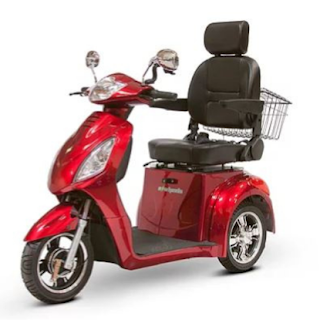How to Replace a Mobility Scooter Battery
Mobility scooters are great for those who need to get around the outside of their homes, but the batteries can wear out with time. If you're not afraid to do some basic repairs yourself, you can save a lot more money by fixing your own battery rather than buying a whole new one.
Types of ScootersMobility scooters come in a variety of shapes and sizes, which can make it confusing to know which battery to replace. To help simplify the process, we've outlined the three most common types of mobility scooters below.
Type A: The traditional style scooter with handlebars that riders stand on to propel themselves. Most batteries in these models are 12-volt lead-acid batteries.
Type B: The lightweight and portable design of this type of mobility scooter relies on a small motor to power the scooter. Batteries are usually 12-volt nickel-cadmium or lithium ion batteries.
Type C: These miniature electric vehicles use a single electric motor to power the scooter. They often have shorter battery life than other models, so it's important to replace the battery regularly. Some types of Type C scooters also use rechargeable batteries, so be sure to select the right type for your specific model.
How to Know if Your Scooter Needs a Battery
Mobility scooters can be a great way to stay mobile and independent, but like all electronics, they require regular maintenance. A battery on a mobility scooter is just as important as one on a car, so it’s important to know when your scooter needs a new battery. Here are four ways to tell if your mobility scooter battery needs to be replaced:
1) Your mobility scooter won’t start. This is the most obvious sign that your battery needs to be replaced. If your mobility scooter won’t turn over, the first thing you should do is try charging it up. If that doesn’t work, then the battery probably needs to be replaced.
2) Your mobility scooter starts slowly or has difficulty moving. If your mobility scooter starts slowly or has difficulty moving, chances are your battery is weak and needs to be replaced.
3) You experience frequent electrical problems with your mobility scooter. If you experience frequent electrical problems with your mobility scooter, such as blackouts or loss of power, the battery may need to be replaced.
4) You notice that the lifespan of your mobility scooter battery has
Battery Selection
Mobility scooters can be a great way to get around, but they can also require a battery replacement on occasion. There are a few things you need to keep in mind when selecting a battery for your mobility scooter.
The first thing to keep in mind is the type of battery your mobility scooter uses. Most mobility scooters use lead-acid batteries, which are heavy and can be difficult to carry around. If you plan on traveling with your mobility scooter, you may want to consider investing in a lithium battery. These batteries are lighter and more durable, making them the best choice for long-term use.
Another thing to consider is the size of the battery. Most mobility scooters for sale come with a carrying case that can hold up to two batteries, but if you have a larger mobility scooter or plan on using it for longer trips, you may want to invest in additional batteries. You also want to make sure that the batteries you select fit into the carrying case of your mobility scooter. Some cases have adjustable straps that will accommodate different battery sizes, while others have slots that fit specific types of batteries.
Finally, make sure you check the voltage and ampere
How Many Amp Hours Do I Need?
Mobility scooters come with a battery that can provide up to 12 miles of power. However, the battery will only last for about 4-6 miles before it needs to be replaced. You should expect to need at least a 2 amp hour battery to replace your mobility scooter's battery.
How Long Should My Battery Last?
Mobility scooters are great for short trips around the house, but they can take a beating. If your battery starts to fail, you can replace it yourself. Here are guidelines on how long a battery should last.
-The average mobility scooter battery lasts about two years.
-If your mobility scooter is used mainly in the summertime, you may need to replace the battery every six months or so.
-If your mobility scooter is used mostly in the wintertime, you may only need to replace the battery once a year.
Buying a Replacement Battery
Mobility scooters are great for short trips around the house, but they don't have a lot of battery life. If your mobility scooter battery runs low, you'll need to replace it before you can use it again.
The first thing you'll need to do is find a replacement battery. There are many different brands and models of mobility scooter batteries, so it's important to research which one is right for your scooter.
Next, you'll need to gather the tools you need to replace the battery. You'll need a screwdriver, a wrench, and some electrical tape. Make sure you have a safe place to store your old battery while you're working on replacing it.
To replace the battery, first remove the screws that hold the bottom plate in place. Then remove the bottom plate and unscrew the battery cover. You'll now be able to access the battery cells.
To replace the battery, first remove the screws that hold the bottom plate in place. Then remove the bottom plate and unscrew the battery cover. You'll now be able to access the battery cells.
Each cell in a mobility scooter battery is connected by wires to each
Conclusion
Mobility scooters are great for short-term use, but eventually the battery will need to be replaced. If you're not up for the task of removing and replacing the battery yourself, there are a few companies that offer this service as part of their repair arsenal. Make sure to do your research before choosing a company to ensure you're getting quality work done at a fair price.


.jpg)

Comments
Post a Comment